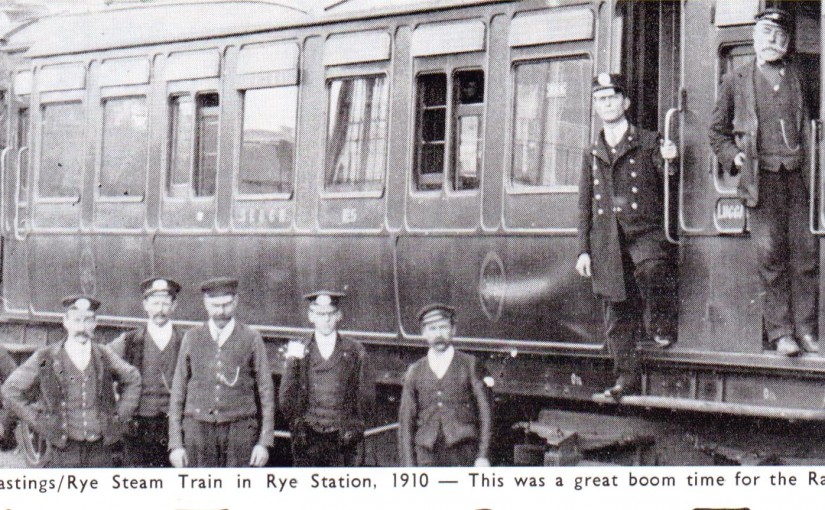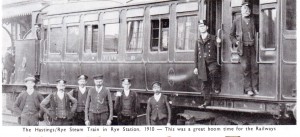Ashford – Hastings Line to Close
The long expected announcement by British Rail has arrived. Posters announcing the closure of Rye Station and other stations on the Ashford, Hastings line went up on April 21st.
Although over 40 objections have been lodged and the proposed closure date of July 10th postponed it seems that, barring a last minute reprieve, the days of the Primrose Line are numbered.
The line from Ashford to Hastings was opened on the 13th February, 1851. The introduction of the railway to this area terminated, almost immediately, the thriving stage coach routes. It appears that in its turn the railway is being superseded by the motor car.
EXTRA TRAVELLING TIME
If this line closes what will it mean to the people of Rye ? The first and obvious hardship will be to the commuters who work in Ashford and Hastings and travel regularly by rail. The bus service to Hastings is fairly adequate but it will mean an extra forty minutes travelling time each day. For the Ashford commuters, even if the bus service is rerouted and re-timed, hardships will be even more severe, additional travelling time will total about seventy minutes a day.
Less obvious but equally important will be the freight situation, not so much the actual delivery but the time taken for delivery. At the present time it is possible to have a large package delivered from Rye to Hastings or Ashford stations within a few hours. Under the new situation, except for small packages which can go by bus, delivery will take a day a least, perhaps even two days by road transport.
LONG TERM EFFECTS
Long term effects of the railway closure are difficult to assess, unless a new form of transport is evolved it seems that many advantages of a channel tunnel would be denied to people living and working in this area. Closure of the line will add to the congestion of the already crowded road network in this area. The holiday resorts of Camber and Winchelsea Beach may be hit and for the poor Londoner who does not own a car and is unable to travel by coach the choice of Rye for his holiday will be denied him.
It seems a tragic paradox that the nationally owned railroad serving Hastings, Rye and Ashford is on the verge of closure and yet a railroad which serves villages, the Robertsbridge—Tenterden line is possibly about to be re-opened by enthusiastic private enterprise with the intentions of eventually making it pay.
Is it possible that Rye will become a dead town? In the past Rye and Winchelsea were two great Sea Ports, when the sea moved back and left them high and dry the Rother was a highway to the world for Rye’s trade and she maintained her position. Winchelsea, however, was left out of touch and soon became the quiet back water that she is today. Will Rye people and industry be cut off in 1967 as. Winchelsea was in 1700?
HELICOPTER SERVICE?
If the railway closes what hope is there for a future similar mode of public transport to take its place ? It has been recently suggested that a helicopter service serving London and the south coast towns could be a profitable investment and the proposed set of routes has been mapped out, Rye is not yet included on this map but if the service did materialise it could mean that Ryers could travel to the metropolis in forty minutes.
“Rye’s Own” June 1967
All articles, photographs and drawings on this web site are World Copyright Protected. No reproduction for publication without prior arrangement. © World Copyright 2015 Cinque Ports Magazines Rye Ltd., Guinea Hall Lodge Sellindge TN25 6EG

